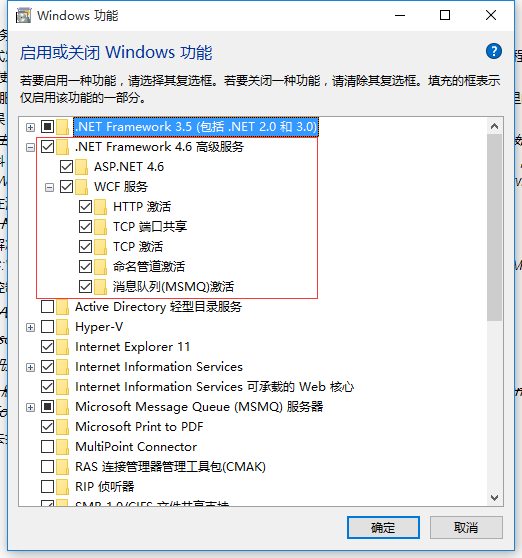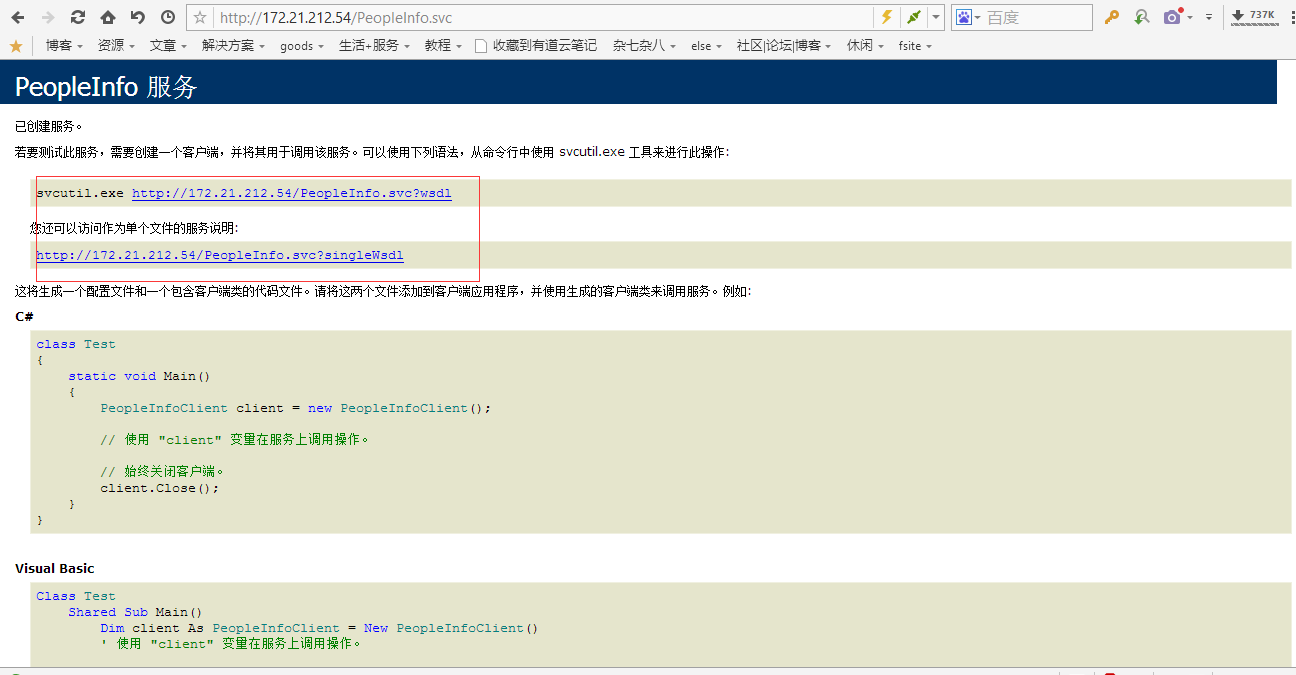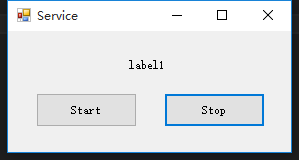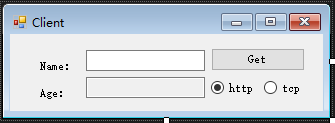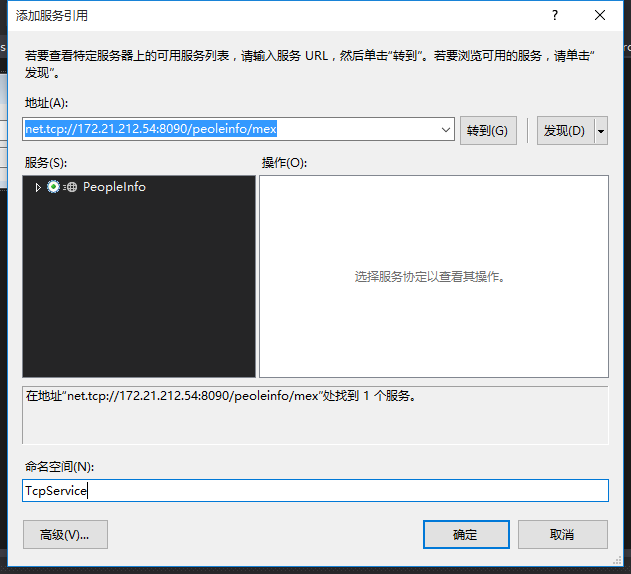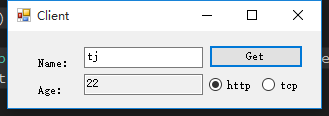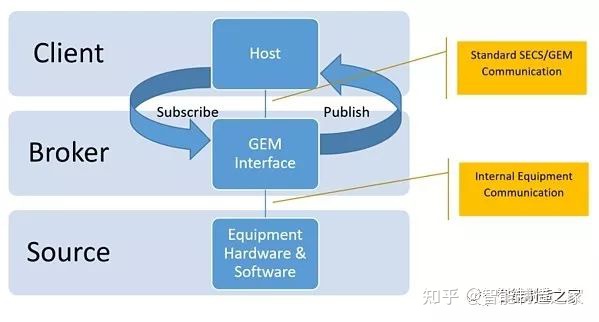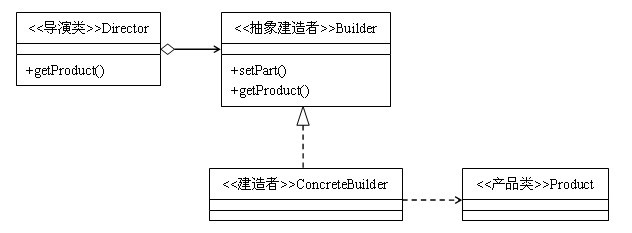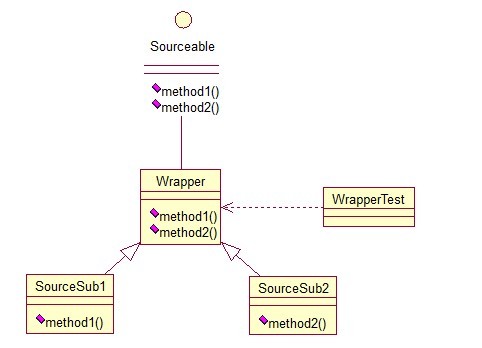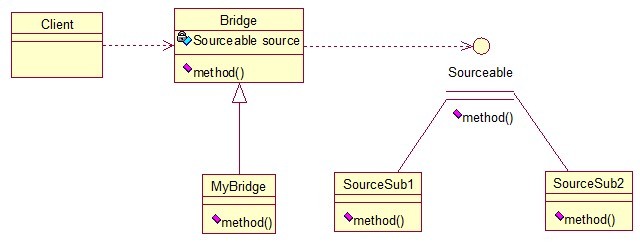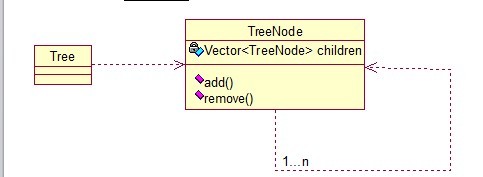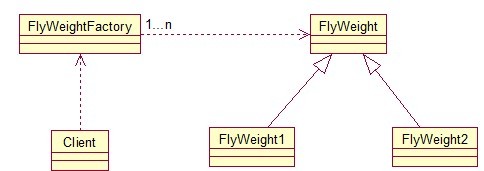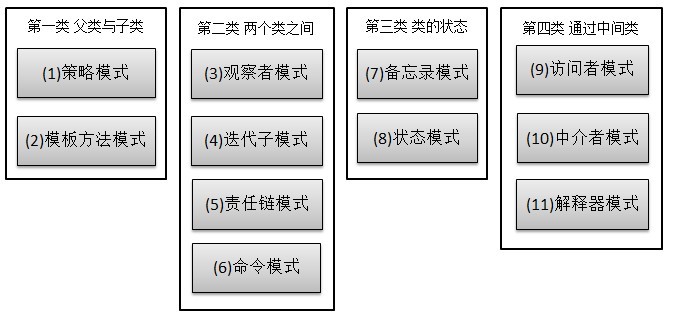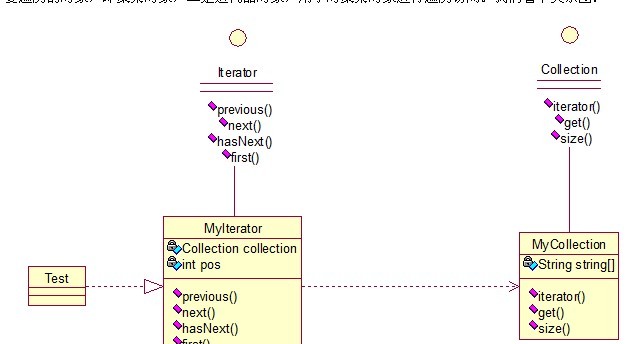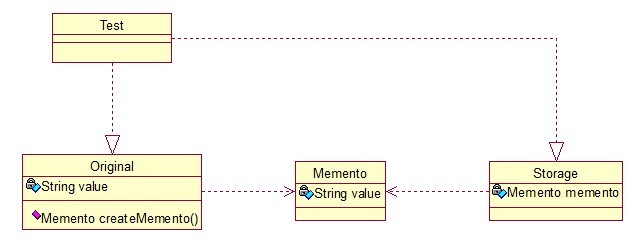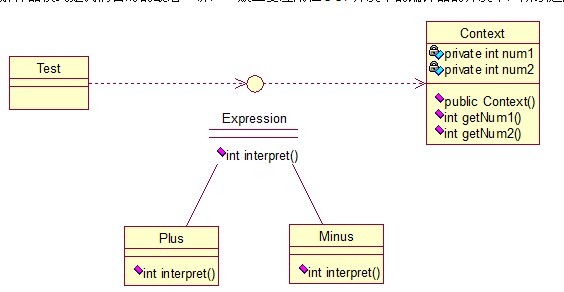本文中,我将通过两个范例由浅入深地讲述什么是委托、为什么要使用委托、委托的调用方式、事件的由来、.Net Framework中的委托和事件、委托和事件对Observer设计模式的意义,对它们的中间代码也做了讨论。
一、委托是什么
来看下面这两个最简单的方法,它们不过是在屏幕上输出一句问候的话语:
public void GreetPeople(string name)
{
EnglishGreeting(name);
}
public void EnglishGreeting(string name)
{
Console.WriteLine("Morning, " + name);
}
现在假设这个程序需要进行全球化,哎呀,不好了,我是中国人,我不明白“Morning”是什么意思,怎么办呢?好吧,我们再加个中文版的问候方法:
1 2 3 4 | public void ChineseGreeting(string name) { Console.WriteLine("早上好, " + name); } |
这时候,GreetPeople也需要改一改了,不然如何判断到底用哪个版本的Greeting问候方法合适呢?在进行这个之前,我们最好再定义一个枚举作为判断的依据:
public enum Language
{
English, Chinese
}
public void GreetPeople(string name, Language lang)
{
swith(lang){
case Language.English:
EnglishGreeting(name);
break;
case Language.Chinese:
ChineseGreeting(name);
break;
}
}
这个解决方案的可扩展性很差,如果日后我们需要再添加韩文版、日文版,就不得不反复修改枚举和GreetPeople()方法,以适应新的需求。
在考虑新的解决方案之前,我们先看看 GreetPeople的方法签名:
1 | public void GreetPeople(string name, Language lang) |
如果你再仔细想想,假如GreetPeople()方法可以接受一个参数变量,这个变量可以代表另一个方法,当我们给这个变量赋值 EnglishGreeting的时候,它代表着 EnglsihGreeting() 这个方法;当我们给它赋值ChineseGreeting 的时候,它又代表着ChineseGreeting()方法。我们将这个参数变量命名为 MakeGreeting,那么不是可以如同给name赋值时一样,在调用 GreetPeople()方法的时候,给这个MakeGreeting 参数也赋上值么(ChineseGreeting或者EnglsihGreeting等)?然后,我们在方法体内,也可以像使用别的参数一样使用MakeGreeting。好了,有了思路了,我们现在就来改改GreetPeople()方法,那么它应该是这个样子了:
1 | public void GreetPeople(string name, *** MakeGreeting) { MakeGreeting(name); } |
注意到 *** ,这个位置通常放置的应该是参数的类型,但到目前为止,我们仅仅是想到应该有个可以代表方法的参数,并按这个思路去改写GreetPeople方法,现在就出现了一个大问题:这个代表着方法的MakeGreeting参数应该是什么类型的?
聪明的你应该已经想到了,现在是委托该出场的时候了,但讲述委托之前,我们再看看MakeGreeting参数所能代表的 ChineseGreeting()和EnglishGreeting()方法的签名:
1 | public void EnglishGreeting(string name) public void ChineseGreeting(string name) |
MakeGreeting的 参数类型定义 应该能够确定 MakeGreeting可以代表的方法种类,于是,委托出现了:它定义了MakeGreeting参数所能代表的方法的种类,也就是MakeGreeting参数的类型。
本例中委托的定义:
1 | public delegate void GreetingDelegate(string name); |
可以与上面EnglishGreeting()方法的签名对比一下,除了加入了delegate关键字以外,其余的是不是完全一样?
现在,让我们再次改动GreetPeople()方法,如下所示:
1 | public void GreetPeople(string name, GreetingDelegate MakeGreeting) { MakeGreeting(name); } |
如你所见,委托GreetingDelegate出现的位置与 string相同,string是一个类型,那么GreetingDelegate应该也是一个类型,或者叫类(Class)。但是委托的声明方式和类却完全不同,这是怎么一回事?实际上,委托在编译的时候确实会编译成类。因为Delegate是一个类,所以在任何可以声明类的地方都可以声明委托。看看这个范例的完整代码:
using System;
using System.Collections.Generic;
using System.Text;
namespace Delegate {
public delegate void GreetingDelegate(string name);
class Program {
private static void EnglishGreeting(string name) {
Console.WriteLine("Morning, " + name);
}
private static void ChineseGreeting(string name) {
Console.WriteLine("早上好, " + name);
}
//注意此方法,它接受一个GreetingDelegate类型的方法作为参数
private static void GreetPeople(string name, GreetingDelegate MakeGreeting) {
MakeGreeting(name);
}
static void Main(string[] args) {
GreetPeople("Jimmy Zhang", EnglishGreeting);
GreetPeople("张子阳", ChineseGreeting);
Console.ReadKey();
}
}
}
输出如下:
Morning, Jimmy Zhang
早上好, 张子阳
我们现在对委托做一个总结:
委托是一个类,它定义了方法的类型,使得可以将方法当作另一个方法的参数来进行传递,这种将方法动态地赋给参数的做法,可以避免在程序中大量使用If-Else(Switch)语句,同时使得程序具有更好的可扩展性。
二、委托的多播
委托可以将多个方法赋给同一个委托,或者叫将多个方法绑定到同一个委托,当调用这个委托的时候,将依次调用其所绑定的方法。在这个例子中,语法如下:
static void Main(string[] args) {
GreetingDelegate delegate1;
delegate1 = EnglishGreeting; // 先给委托类型的变量赋值
delegate1 += ChineseGreeting; // 给此委托变量再绑定一个方法
// 将先后调用 EnglishGreeting 与 ChineseGreeting 方法
delegate1 ("Jimmy Zhang");
Console.ReadKey();
}
NOTE:第一次用的“=”,是赋值的语法;第二次,用的是“+=”,是绑定的语法。如果第一次就使用“+=”,将出现“使用了未赋值的局部变量”的编译错误。我们也可以使用下面的代码来这样简化这一过程:
1 2 | GreetingDelegate delegate1 = new GreetingDelegate(EnglishGreeting); delegate1 += ChineseGreeting; // 给此委托变量再绑定一个方法 |
看到这里,应该注意到,这段代码第一条语句与实例化一个类是何其的相似,你不禁想到:上面第一次绑定委托时不可以使用“+=”的编译错误,或许可以用这样的方法来避免:代码如下:
1 2 3 | GreetingDelegate delegate1 = new GreetingDelegate(); delegate1 += EnglishGreeting; // 这次用的是 “+=”,绑定语法。 delegate1 += ChineseGreeting; // 给此委托变量再绑定一个方法 |
但实际上,这样会出现编译错误: “GreetingDelegate”方法没有采用“0”个参数的重载。尽管这样的结果让我们觉得有点沮丧,但是编译的提示:“没有0个参数的重载”再次让我们联想到了类的构造函数。我知道你一定按捺不住想探个究竟,但再此之前我们需要先把基础知识和应用介绍完。既然给委托可以绑定一个方法,那么也应该有办法取消对方法的绑定,很容易想到,这个语法是“-=”:
static void Main(string[] args) {
GreetingDelegate delegate1 = new GreetingDelegate(EnglishGreeting);
delegate1 += ChineseGreeting; // 给此委托变量再绑定一个方法
// 将先后调用 EnglishGreeting 与 ChineseGreeting 方法
GreetPeople("Jimmy Zhang", delegate1);
Console.WriteLine();
delegate1 -= EnglishGreeting; //取消对EnglishGreeting方法的绑定
// 将仅调用 ChineseGreeting
GreetPeople("张子阳", delegate1);
Console.ReadKey();
}
输出为:
Morning, Jimmy Zhang
早上好, Jimmy Zhang
早上好, 张子阳
三、事件的由来
我们继续思考上面的程序:上面的三个方法都定义在Program类中,这样做是为了理解的方便,实际应用中,通常都是 GreetPeople 在一个类中,ChineseGreeting和 EnglishGreeting 在另外的类中。现在你已经对委托有了初步了解,是时候对上面的例子做个改进了。假设我们将GreetingPeople()放在一个叫GreetingManager的类中,那么新程序应该是这个样子的:
namespace Delegate {
//定义委托,它定义了可以代表的方法的类型
public delegate void GreetingDelegate(string name);
//新建的GreetingManager类
public class GreetingManager{
public void GreetPeople(string name, GreetingDelegate MakeGreeting) {
MakeGreeting(name);
}
}
class Program {
private static void EnglishGreeting(string name) {
Console.WriteLine("Morning, " + name);
}
private static void ChineseGreeting(string name) {
Console.WriteLine("早上好, " + name);
}
static void Main(string[] args) {
GreetingManager gm = new GreetingManager();
gm.GreetPeople("Jimmy Zhang", EnglishGreeting);
gm.GreetPeople("张子阳", ChineseGreeting);
}
}
}
输出结果:
Morning, Jimmy Zhang
早上好, 张子阳
现在,假设我们需要使用上一节学到的知识,将多个方法绑定到同一个委托变量,该如何做呢?让我们再次改写代码:
static void Main(string[] args) {
GreetingManager gm = new GreetingManager();
GreetingDelegate delegate1;
delegate1 = EnglishGreeting;
delegate1 += ChineseGreeting;
gm.GreetPeople("Jimmy Zhang", delegate1);
}
输出:
Morning, Jimmy Zhang
早上好, Jimmy Zhang
到了这里,我们不禁想到:面向对象设计,讲究的是对象的封装,既然可以声明委托类型的变量,我们何不将这个变量封装到 GreetManager类中?在这个类的客户端中使用不是更方便么?于是,我们改写GreetManager类,像这样:
public class GreetingManager{
//在GreetingManager类的内部声明delegate1变量
public GreetingDelegate delegate1;
public void GreetPeople(string name, GreetingDelegate MakeGreeting) {
MakeGreeting(name);
}
}
现在,我们可以这样使用这个委托变量:
static void Main(string[] args) {
GreetingManager gm = new GreetingManager();
gm.delegate1 = EnglishGreeting;
gm.delegate1 += ChineseGreeting;
gm.GreetPeople("Jimmy Zhang", gm.delegate1);
}
输出为:
Morning, Jimmy Zhang
早上好, Jimmy Zhang
尽管这样做没有任何问题,但我们发现这条语句很奇怪。在调用gm.GreetPeople方法的时候,再次传递了gm的delegate1字段。既然如此,我们何不修改 GreetingManager 类成这样:
public class GreetingManager{
//在GreetingManager类的内部声明delegate1变量
public GreetingDelegate delegate1;
public void GreetPeople(string name) {
if(delegate1!=null){ //如果有方法注册委托变量
delegate1(name); //通过委托调用方法
}
}
}
在客户端,调用看上去更简洁一些:
static void Main(string[] args) {
GreetingManager gm = new GreetingManager();
gm.delegate1 = EnglishGreeting;
gm.delegate1 += ChineseGreeting;
gm.GreetPeople("Jimmy Zhang"); //注意,这次不需要再传递 delegate1变量
}
输出为:
Morning, Jimmy Zhang
早上好, Jimmy Zhang
尽管这样达到了我们要的效果,但是还是存在着问题:
在这里,delegate1和我们平时用的string类型的变量没有什么分别,而我们知道,并不是所有的字段都应该声明成public,合适的做法是应该public的时候public,应该private的时候private。
我们先看看如果把 delegate1 声明为 private会怎样?结果就是:这简直就是在搞笑。因为声明委托的目的就是为了把它暴露在类的客户端进行方法的注册,你把它声明为private了,客户端对它根本就不可见,那它还有什么用?
再看看把delegate1 声明为 public 会怎样?结果就是:在客户端可以对它进行随意的赋值等操作,严重破坏对象的封装性。
最后,第一个方法注册用“=”,是赋值语法,因为要进行实例化,第二个方法注册则用的是“+=”。但是,不管是赋值还是注册,都是将方法绑定到委托上,除了调用时先后顺序不同,再没有任何的分别,这样不是让人觉得很别扭么?
于是,Event出场了,它封装了委托类型的变量,使得:在类的内部,不管你声明它是public还是protected,它总是private的。在类的外部,注册“+=”和注销“-=”的访问限定符与你在声明事件时使用的访问符相同。
我们改写GreetingManager类,它变成了这个样子:
public class GreetingManager{
//这一次我们在这里声明一个事件
public event GreetingDelegate MakeGreet;
public void GreetPeople(string name) {
MakeGreet(name);
}
}
很容易注意到:MakeGreet 事件的声明与之前委托变量delegate1的声明唯一的区别是多了一个event关键字。看到这里,在结合上面的讲解,你应该明白到:事件其实没什么不好理解的,声明一个事件不过类似于声明一个进行了封装的委托类型的变量而已。
为了证明上面的推论,如果我们像下面这样改写Main方法:
static void Main(string[] args) {
GreetingManager gm = new GreetingManager();
gm.MakeGreet = EnglishGreeting; // 编译错误1
gm.MakeGreet += ChineseGreeting;
gm.GreetPeople("Jimmy Zhang");
}
会得到编译错误:事件“Delegate.GreetingManager.MakeGreet”只能出现在 += 或 -= 的左边(从类型“Delegate.GreetingManager”中使用时除外)。
事件和委托的编译代码
这时候,我们注释掉编译错误的行,然后重新进行编译,再借助Reflactor来对 event的声明语句做一探究,看看为什么会发生这样的错误:
public event GreetingDelegate MakeGreet;

可以看到,实际上尽管我们在GreetingManager里将 MakeGreet 声明为public,但是,实际上MakeGreet会被编译成 私有字段,难怪会发生上面的编译错误了,因为它根本就不允许在GreetingManager类的外面以赋值的方式访问,从而验证了我们上面所做的推论。
我们再进一步看下MakeGreet所产生的代码:
private GreetingDelegate MakeGreet; //对事件的声明 实际是 声明一个私有的委托变量
[MethodImpl(MethodImplOptions.Synchronized)]
public void add_MakeGreet(GreetingDelegate value){
this.MakeGreet = (GreetingDelegate) Delegate.Combine(this.MakeGreet, value);
}
[MethodImpl(MethodImplOptions.Synchronized)]
public void remove_MakeGreet(GreetingDelegate value){
this.MakeGreet = (GreetingDelegate) Delegate.Remove(this.MakeGreet, value);
}
现在已经很明确了:MakeGreet事件确实是一个GreetingDelegate类型的委托,只不过不管是不是声明为public,它总是被声明为private。另外,它还有两个方法,分别是add_MakeGreet和remove_MakeGreet,这两个方法分别用于注册委托类型的方法和取消注册。实际上也就是: “+= ”对应 add_MakeGreet,“-=”对应remove_MakeGreet。而这两个方法的访问限制取决于声明事件时的访问限制符。
在add_MakeGreet()方法内部,实际上调用了System.Delegate的Combine()静态方法,这个方法用于将当前的变量添加到委托链表中。我们前面提到过两次,说委托实际上是一个类,在我们定义委托的时候:
public delegate void GreetingDelegate(string name);
当编译器遇到这段代码的时候,会生成下面这样一个完整的类:
public sealed class GreetingDelegate:System.MulticastDelegate{
public GreetingDelegate(object @object, IntPtr method);
public virtual IAsyncResult BeginInvoke(string name, AsyncCallback callback, object @object);
public virtual void EndInvoke(IAsyncResult result);
public virtual void Invoke(string name);
}

关于这个类的更深入内容,可以参阅《CLR Via C#》等相关书籍,这里就不再讨论了。
四、委托、事件与Observer设计模式
假设我们有个高档的热水器,我们给它通上电,当水温超过95度的时候:1、扬声器会开始发出语音,告诉你水的温度;2、液晶屏也会改变水温的显示,来提示水已经快烧开了。
现在我们需要写个程序来模拟这个烧水的过程,我们将定义一个类来代表热水器,我们管它叫:Heater,它有代表水温的字段,叫做temperature;当然,还有必不可少的给水加热方法BoilWater(),一个发出语音警报的方法MakeAlert(),一个显示水温的方法,ShowMsg()。
namespace Delegate {
class Heater {
private int temperature; // 水温
// 烧水
public void BoilWater() {
for (int i = 0; i <= 100; i++) {
temperature = i;
if (temperature > 95) {
MakeAlert(temperature);
ShowMsg(temperature);
}
}
}
// 发出语音警报
private void MakeAlert(int param) {
Console.WriteLine("Alarm:嘀嘀嘀,水已经 {0} 度了:" , param);
}
// 显示水温
private void ShowMsg(int param) {
Console.WriteLine("Display:水快开了,当前温度:{0}度。" , param);
}
}
class Program {
static void Main() {
Heater ht = new Heater();
ht.BoilWater();
}
}
}
Observer设计模式简介
上面的例子显然能完成我们之前描述的工作,但是却并不够好。现在假设热水器由三部分组成:热水器、警报器、显示器,它们来自于不同厂商并进行了组装。那么,应该是热水器仅仅负责烧水,它不能发出警报也不能显示水温;在水烧开时由警报器发出警报、显示器显示提示和水温。这时候,上面的例子就应该变成这个样子:
// 热水器
public class Heater {
private int temperature;
// 烧水
private void BoilWater() {
for (int i = 0; i <= 100; i++) {
temperature = i;
}
}
}
// 警报器
public class Alarm{
private void MakeAlert(int param) {
Console.WriteLine("Alarm:嘀嘀嘀,水已经 {0} 度了:" , param);
}
}
// 显示器
public class Display{
private void ShowMsg(int param) {
Console.WriteLine("Display:水已烧开,当前温度:{0}度。" , param);
}
}
这里就出现了一个问题:如何在水烧开的时候通知报警器和显示器?在继续进行之前,我们先了解一下Observer设计模式,Observer设计模式中主要包括如下两类对象:
1.Subject:监视对象,它往往包含着其他对象所感兴趣的内容。在本范例中,热水器就是一个监视对象,它包含的其他对象所感兴趣的内容,就是temprature字段,当这个字段的值快到100时,会不断把数据发给监视它的对象。
2.Observer:监视者,它监视Subject,当Subject中的某件事发生的时候,会告知Observer,而Observer则会采取相应的行动。在本范例中,Observer有警报器和显示器,它们采取的行动分别是发出警报和显示水温。
在本例中,事情发生的顺序应该是这样的:
1.警报器和显示器告诉热水器,它对它的温度比较感兴趣(注册)。
2.热水器知道后保留对警报器和显示器的引用。
3.热水器进行烧水这一动作,当水温超过95度时,通过对警报器和显示器的引用,自动调用警报器的MakeAlert()方法、显示器的ShowMsg()方法。
类似这样的例子是很多的,GOF对它进行了抽象,称为Observer设计模式:Observer设计模式是为了定义对象间的一种一对多的依赖关系,以便于当一个对象的状态改变时,其他依赖于它的对象会被自动告知并更新。Observer模式是一种松耦合的设计模式。
实现范例的Observer设计模式
我们之前已经对委托和事件介绍很多了,现在写代码应该很容易了,现在在这里直接给出代码,并在注释中加以说明。
using System;
using System.Collections.Generic;
using System.Text;
namespace Delegate {
// 热水器
public class Heater {
private int temperature;
public delegate void BoilHandler(int param); //声明委托
public event BoilHandler BoilEvent; //声明事件
// 烧水
public void BoilWater() {
for (int i = 0; i <= 100; i++) {
temperature = i;
if (temperature > 95) {
if (BoilEvent != null) { //如果有对象注册
BoilEvent(temperature); //调用所有注册对象的方法
}
}
}
}
}
// 警报器
public class Alarm {
public void MakeAlert(int param) {
Console.WriteLine("Alarm:嘀嘀嘀,水已经 {0} 度了:", param);
}
}
// 显示器
public class Display {
public static void ShowMsg(int param) { //静态方法
Console.WriteLine("Display:水快烧开了,当前温度:{0}度。", param);
}
}
class Program {
static void Main() {
Heater heater = new Heater();
Alarm alarm = new Alarm();
heater.BoilEvent += alarm.MakeAlert; //注册方法
heater.BoilEvent += (new Alarm()).MakeAlert; //给匿名对象注册方法
heater.BoilEvent += Display.ShowMsg; //注册静态方法
heater.BoilWater(); //烧水,会自动调用注册过对象的方法
}
}
}
输出为:
Alarm:嘀嘀嘀,水已经 96 度了:
Alarm:嘀嘀嘀,水已经 96 度了:
Display:水快烧开了,当前温度:96度。
// 省略...
五、.Net Framework中的委托与事件
尽管上面的范例很好地完成了我们想要完成的工作,但是我们不仅疑惑:为什么.Net Framework 中的事件模型和上面的不同?为什么有很多的EventArgs参数?
在回答上面的问题之前,我们先搞懂 .Net Framework的编码规范:
· 委托类型的名称都应该以EventHandler结束。
· 委托的原型定义:有一个void返回值,并接受两个输入参数:一个Object 类型,一个 EventArgs类型(或继承自EventArgs)。
· 事件的命名为 委托去掉 EventHandler之后剩余的部分。
· 继承自EventArgs的类型应该以EventArgs结尾。
1、委托声明原型中的Object类型的参数代表了Subject,也就是监视对象,在本例中是 Heater(热水器)。回调函数(比如Alarm的MakeAlert)可以通过它访问触发事件的对象(Heater)。
2、EventArgs 对象包含了Observer所感兴趣的数据,在本例中是temperature。
上面这些其实不仅仅是为了编码规范而已,这样也使得程序有更大的灵活性。比如说,如果我们不光想获得热水器的温度,还想在Observer端(警报器或者显示器)方法中获得它的生产日期、型号、价格,那么委托和方法的声明都会变得很麻烦,而如果我们将热水器的引用传给警报器的方法,就可以在方法中直接访问热水器了。
现在我们改写之前的范例,让它符合 .Net Framework 的规范:
using System;
using System.Collections.Generic;
using System.Text;
namespace Delegate {
// 热水器
public class Heater {
private int temperature;
public string type = "RealFire 001"; // 添加型号作为演示
public string area = "China Xian"; // 添加产地作为演示
//声明委托
public delegate void BoiledEventHandler(Object sender, BoiledEventArgs e);
public event BoiledEventHandler Boiled; //声明事件
// 自定义EventArgs类 定义BoiledEventArgs类,传递给Observer所感兴趣的信息
public class BoiledEventArgs : EventArgs {
public readonly int temperature;
public BoiledEventArgs(int temperature) {
this.temperature = temperature;
}
}
// 可以供继承自 Heater 的类重写,以便继承类拒绝其他对象对它的监视
protected virtual void OnBoiled(BoiledEventArgs e) {
if (Boiled != null) { // 如果有对象注册
Boiled(this, e); // 调用所有注册对象的方法
}
}
// 烧水。
public void BoilWater() {
for (int i = 0; i <= 100; i++) {
temperature = i;
if (temperature > 95) {
//建立BoiledEventArgs 对象。
BoiledEventArgs e = new BoiledEventArgs(temperature);
OnBoiled(e); // 调用 OnBolied方法
}
}
}
}
// 警报器
public class Alarm {
public void MakeAlert(Object sender, Heater.BoiledEventArgs e) {
Heater heater = (Heater)sender; //这里是不是很熟悉呢?
//访问 sender 中的公共字段
Console.WriteLine("Alarm:{0} - {1}: ", heater.area, heater.type);
Console.WriteLine("Alarm: 嘀嘀嘀,水已经 {0} 度了:", e.temperature);
Console.WriteLine();
}
}
// 显示器
public class Display {
public static void ShowMsg(Object sender, Heater.BoiledEventArgs e) { //静态方法
Heater heater = (Heater)sender;
Console.WriteLine("Display:{0} - {1}: ", heater.area, heater.type);
Console.WriteLine("Display:水快烧开了,当前温度:{0}度。", e.temperature);
Console.WriteLine();
}
}
class Program {
static void Main() {
Heater heater = new Heater();
Alarm alarm = new Alarm();
heater.Boiled += alarm.MakeAlert; //注册方法
heater.Boiled += (new Alarm()).MakeAlert; //给匿名对象注册方法
heater.Boiled += new Heater.BoiledEventHandler(alarm.MakeAlert); //也可以这么注册
heater.Boiled += Display.ShowMsg; //注册静态方法
heater.BoilWater(); //烧水,会自动调用注册过对象的方法
}
}
}
输出为:
Alarm:China Xian - RealFire 001:
Alarm: 嘀嘀嘀,水已经 96 度了:
Alarm:China Xian - RealFire 001:
Alarm: 嘀嘀嘀,水已经 96 度了:
Alarm:China Xian - RealFire 001:
Alarm: 嘀嘀嘀,水已经 96 度了:
Display:China Xian - RealFire 001:
Display:水快烧开了,当前温度:96度。
// 省略 ...
六、泛型委托
简单的泛型委托示例:
class Program
{
// 泛型委托,与普通委托类似,不同之处只在于使用泛型委托要指定泛型参数
public delegate T MyGenericDelegate<T>(T obj1,T obj2);
int AddInt(int x, int y)
{
return x + y;
}
string AddString(string s1, string s2)
{
return s1 + s2;
}
static void Main(string[] args)
{
Program p = new Program();
MyGenericDelegate<int> intDel;
intDel = p.AddInt;
Console.WriteLine("int代理的值是{0}", intDel(100, 200));
MyGenericDelegate<string> stringDel;
stringDel = p.AddString;
Console.WriteLine("string代理的值是{0}", stringDel("aaa", "bbb"));
}
}
为了方便开发,.NET基类库针对在实际开发中最常用的情形提供了几个预定义好的委托,这些预定义委托用得很广,比如在编写lambda表达式和开发并行计算程序时经常要用到他们。.NET提供的泛型委托包括Action、Func和Predicate
1、Action<T> 泛型委托
Action是无返回值的泛型委托,Action至少0个参数,至多16个参数,无返回值。
· Action 表示无参,无返回值的委托
· Action<int,string> 表示有传入参数int,string无返回值的委托
· Action<int,string,bool> 表示有传入参数int,string,bool无返回值的委托
· Action<int,int,int,int> 表示有传入4个int型参数,无返回值的委托
泛型委托与直接显示声明自定义委托的示例比较:
显示声明自定义委托:
delegate void DisplayMessage(string message);
public class TestCustomDelegate
{
public static void Main()
{
DisplayMessage messageTarget;
messageTarget = ShowWindowsMessage;
messageTarget("Hello, World!");
}
private static void ShowWindowsMessage(string message)
{
MessageBox.Show(message);
}
}
Action<T> 用法。比起自定义委托,明显可以看出代码简洁了。
public class TestAction1
{
public static void Main()
{
Action<string> messageTarget;
messageTarget = ShowWindowsMessage;
messageTarget("Hello, World!");
}
private static void ShowWindowsMessage(string message)
{
MessageBox.Show(message);
}
}
2、Func<T, TResult> 委托
Func是有返回值的泛型委托,Func至少0个参数,至多16个参数,根据返回值泛型返回。必须有返回值,不可void
· Func<int> 表示无参,返回值为int的委托
· Func<object,string,int> 表示传入参数为object, string 返回值为int的委托
· Func<object,string,int> 表示传入参数为object, string 返回值为int的委托
· Func<T1,T2,,T3,int> 表示传入参数为T1,T2,,T3(泛型)返回值为int的委托
下面是一个简单的普通委托来传方法的示例。
private delegate string Say();
public static string SayHello()
{
return "Hello";
}
static void Main(string[] args)
{
Say say = SayHello;
Console.WriteLine(say());
Console.ReadKey();
}
为了更方便,我们再来试试.Net默认带的委托。
public static string SayHello()
{
return "Hello";
}
static void Main(string[] args)
{
Func<string> say = SayHello;
Console.WriteLine(say());
Console.ReadKey();
}
如果需要参数的,还可以这样传一份。
public static string SayHello(string str)
{
return str + str;
}
static void Main(string[] args)
{
Func<string, string> say = SayHello;
string str = say("abc");
Console.WriteLine(str); //输出abcabc
Console.ReadKey();
}
3、Predicate
predicate 是返回bool型的泛型委托, Predicate有且只有一个参数,返回值固定为bool
· predicate<int> 表示传入参数为int 返回bool的委托
先来一个普通示例:
using System;
using System.Drawing;
public class Example
{
public static void Main()
{
// Create an array of Point structures.
Point[] points = { new Point(100, 200),
new Point(150, 250), new Point(250, 375),
new Point(275, 395), new Point(295, 450) };
// Find the first Point structure for which X times Y
// is greater than 100000.
Point first = Array.Find(points, x => x.X * x.Y > 100000 );
// Display the first structure found.
Console.WriteLine("Found: X = {0}, Y = {1}", first.X, first.Y);
}
}
上边的示例只不过使用 lambda 表达式来表示Predicate<T>委托,使用predicate 改造上边的示例:
using System;
using System.Drawing;
public class Example
{
public static void Main()
{
// Create an array of Point structures.
Point[] points = { new Point(100, 200),
new Point(150, 250), new Point(250, 375),
new Point(275, 395), new Point(295, 450) };
// Define the Predicate<T> delegate.
Predicate<Point> predicate = FindPoints;
// Find the first Point structure for which X times Y
// is greater than 100000.
Point first = Array.Find(points, predicate);
// Display the first structure found.
Console.WriteLine("Found: X = {0}, Y = {1}", first.X, first.Y);
}
private static bool FindPoints(Point obj)
{
return obj.X * obj.Y > 100000;
}
}
4、Func与Action都支持Lambda的形式调用
一般的需求下,我们就使用微软定义的委托就足够了,这样减少了我们对委托的重复定义,可能有部分初学者见到Func<>,Action<>这样的代码肯定会很懵比,这只是你对新东西陌生罢了,多结合实例敲几遍,自然就会用了,它们其实就是微软封装定义好了的委托,没有什么特别的。我们上面的代码也可以使用Lambda的形式:
class Program
{
static void Main(string[] args)
{
Func<int,int,int> add = (a, b) => a + b;
Calculate(add, 10, 25);
Console.ReadKey();
}
static void Calculate<T, Y, U>(Func<T, Y, U> ex, T a, Y b)
{
Console.WriteLine(ex(a, b) + "\n");
}
}
这样写用Func就省去了定义委托这一步。
同样,其实在我们的webform,winform框架中,微软也给我们规范了一个委托的定义:
1 | delegate void EvenHandler(object sender, EventArgs e); |
七、事件的详解
什么是事件?事件涉及两类角色:事件的发布者和事件的订阅者。触发事件的对象称为事件发布者,捕获时间并对其作出响应的对象叫做事件订阅者。 个人理解事件和委托的关系,相当于属性和字段的关系。
事件和委托的关系:在事件触发以后,事件发布者需要发布消息,通知事件订阅者进行事件处理,但事件发布者并不知道要通知哪些事件订阅者,这就需要在发布者和订阅者之间存在一个中介,这个中介就是委托。我们知道,委托都有一个调用列表,那么,只需要事件发布者有这样一个委托,各个事件订阅者将自己的事件处理程序都加入到该委托的调用列表中,那么事件触发时,发布者只需要调用委托即可触发订阅者的事件处理程序。
事件的声明:事件就是类成员的一种,只是事件定义中包含一种特殊的关键字:event。事件的声明有两种方式:
1、采用自定义委托类型。
2、采用EventHandler预定义委托类型,如下面代码:
1 2 | //关键字 委托类型 时间名 public event EventHandler PrintComplete; |
这两种方式基本相同,只不过第二种是.Net Framework中普遍采用的一种形式,因此建议尽量采用第二种方式。我们先来看看EventHandler委托的签名:
1 | public delegate void EventHandler(Object sender,EventArgs e); |
从上面的签名可以看出:
1、EventHandler委托的返回类型为void;
2、第一个参数--sender参数,它负责保存触发事件的对象的引用,因为参数的类型是Object类型,因此它可以保存任何类型的实例;
3、第二个参数--e参数,它负责保存事件数据,这里是在BCL中定义的默认的EventArgs类,它位于System命名空间中,他不能保存任何数据。
订阅事件:事件订阅者角色需要订阅事件发布者发布的事件,这样才能在事件发布时接受到消息并作出响应,事件事实上是委托类型,因此事件处理方法必须和委托签名相匹配。如果事件使用预定义的委托类型:EventHandler,那么匹配它的事件处理方法如下:
public void SomeEventHandler(object sender, EventArgs e)
{
//..
}
有了事件处理方法,就可以订阅事件了,只需要使用加法赋值运算符(+=)即可。
触发事件代码如下:
//检查事件是否为空
if (PrintComplete != null)
{
//像调用方法一样触发事件,参数
PrintComplete(this,new EventArgs();
}
完整的一个事件例子:
namespace ConsoleApplication1
{
public class Program
{
static void Main(string[] args)
{
Console.WriteLine("该做的东西做完,然后触发事件!");
EventSample es = new EventSample();
es.ShowComplete += es.MyEventHandler;
es.OnShowComplete();
Console.ReadKey();
}
}
public class EventSample
{
//定义一个事件
public event EventHandler ShowComplete;
//触发事件
public void OnShowComplete()
{
//判断是否绑定了事件处理方法,null表示没有事件处理方法
if (ShowComplete != null)
{
//像调用方法一样触发事件
ShowComplete(this, new EventArgs());
}
}
//事件处理方法
public void MyEventHandler(object sender, EventArgs e)
{
Console.WriteLine("谁触发了我?" + sender.ToString());
}
}
}
八、事件引起的内存泄露
1、不手动注销事件也不发生内存泄露的情况
我们经常会写EventHandler += AFunction; 如果没有手动注销这个Event handler类似:EventHandler –= AFunction 有可能会发生内存泄露。
public class Program
{
static void ShowMemory()
{
Console.WriteLine("共用内存:{0}M", GC.GetTotalMemory(true) / 1024 / 1024);
}
static void Main(string[] args)
{
ShowMemory();
for (int i = 0; i < 5; i++)
{
EventSample es = new EventSample();
es.ShowComplete += es.MyEventHandler;
GC.Collect();
GC.WaitForPendingFinalizers();
GC.Collect();
ShowMemory();
}
Console.ReadKey();
}
}
public class EventSample
{
byte[] m_ExtraMemory = new byte[1024 * 1024 * 12];
//定义一个事件
public event EventHandler ShowComplete;
//触发事件
public void OnShowComplete()
{
//判断是否绑定了事件处理方法,null表示没有事件处理方法
if (ShowComplete != null)
{
//像调用方法一样触发事件
ShowComplete(this, new EventArgs());
}
}
//事件处理方法
public void MyEventHandler(object sender, EventArgs e)
{
Console.WriteLine("谁触发了我?" + sender.ToString());
}
}
上述代码输出如下:

从输出来看,内存被GC正常地回收,没有问题。
2、内存泄露的情况
我们来将代码改动一下
public class Program
{
static void ShowMemory()
{
Console.WriteLine("共用内存:{0}M", GC.GetTotalMemory(true) / 1024 / 1024);
}
static void Main(string[] args)
{
ShowMemory();
for (int i = 0; i < 5; i++)
{
Microsoft.Win32.SystemEvents.DisplaySettingsChanged += new EventHandler(new MyMethod().SystemEvents_DisplaySettingsChanged);
GC.Collect();
GC.WaitForPendingFinalizers();
GC.Collect();
ShowMemory();
}
Console.ReadKey();
}
}
public class MyMethod
{
byte[] m_ExtraMemory = new byte[1024 * 1024 * 12];
public void SystemEvents_DisplaySettingsChanged(object sender, EventArgs e){ }
}
输出结果如下:

从输出结果来看,内存已不能被GC正常回收。为什么会出现这种情况呢?我们来看看Microsoft.Win32.SystemEvents.DisplaySettingsChanged的源代码(省略前后部分):
public sealed class SystemEvents
{
... ...
public static event EventHandler DisplaySettingsChanged
... ...
}
为什么会有差别,根本区别在于后者有个SystemEvents.DisplaySettingsChanged事件,而这个事件是静态的。
3、释放资源
如果我们希望释放资源,则我们需要在某个地方实现-=AFunction操作
public class Program
{
static void ShowMemory()
{
Console.WriteLine("共用内存:{0}M", GC.GetTotalMemory(true) / 1024 / 1024);
}
static void Main(string[] args)
{
ShowMemory();
for (int i = 0; i < 5; i++)
{
using (MyMethod myMethod = new MyMethod())
{
Microsoft.Win32.SystemEvents.DisplaySettingsChanged += new EventHandler(myMethod.SystemEvents_DisplaySettingsChanged);
}
GC.Collect();
GC.WaitForPendingFinalizers();
GC.Collect();
ShowMemory();
}
Console.ReadKey();
}
}
public class MyMethod : IDisposable
{
byte[] m_ExtraMemory = new byte[1024 * 1024 * 12];
public void SystemEvents_DisplaySettingsChanged(object sender, EventArgs e) { }
public void Dispose()
{
Microsoft.Win32.SystemEvents.DisplaySettingsChanged -= new EventHandler(SystemEvents_DisplaySettingsChanged);
}
}
输出如下:

增加了一个Dispose来实现 "-="功能就OK了。
4、注意静态、单例
静态对象生命周期很长,永远不会被GC回收,一旦被他给引用上了,那就不可能释放了。上面的例子就是被静态的DisplaySettingsChanged 引用导致不能被回收。 另外一个要注意的是Singleton单例模式实现的类,他们也是static的生命周期很长,要注意引用链,你的类是否被它引用上,如果在它的引用链上,就内存泄露了。
九、委托的三种调用
本文将主要通过同步调用、异步调用、异步回调三个示例来讲解在用委托执行同一个加法类的时候的的区别和利弊
首先,通过代码定义一个委托和下面三个示例将要调用的方法:
public delegate int AddHandler(int a,int b);
public class 加法类
{
public static int Add(int a, int b)
{
Console.WriteLine("开始计算:" + a + "+" + b);
Thread.Sleep(3000); //模拟该方法运行三秒
Console.WriteLine("计算完成!");
return a + b;
}
}
1、同步调用
委托的Invoke方法用来进行同步调用。同步调用也可以叫阻塞调用,它将阻塞当前线程,然后执行调用,调用完毕后再继续向下进行。代码如下
public class 同步调用
{
static void Main()
{
Console.WriteLine("===== 同步调用 SyncInvokeTest =====");
AddHandler handler = new AddHandler(加法类.Add);
int result = handler?.Invoke(1, 2);
Console.WriteLine("继续做别的事情。。。");
Console.WriteLine(result);
Console.ReadKey();
}
}
同步调用会阻塞线程,如果是要调用一项繁重的工作(如大量IO操作),可能会让程序停顿很长时间,造成糟糕的用户体验,这时候异步调用就很有必要了。
2、异步调用
异步调用不阻塞线程,而是把调用塞到线程池中,程序主线程或UI线程可以继续执行。委托的异步调用通过BeginInvoke和EndInvoke来实现。代码如下:
public class 异步调用
{
static void Main()
{
Console.WriteLine("===== 异步调用 AsyncInvokeTest =====");
AddHandler handler = new AddHandler(加法类.Add);
//IAsyncResult: 异步操作接口(interface)
//BeginInvoke: 委托(delegate)的一个异步方法的开始
IAsyncResult result = handler.BeginInvoke(1, 2, null, null);
Console.WriteLine("继续做别的事情。。。");
//异步操作返回
Console.WriteLine(handler.EndInvoke(result));
Console.ReadKey();
}
}
可以看到,主线程并没有等待,而是直接向下运行了。但是问题依然存在,当主线程运行到EndInvoke时,如果这时调用没有结束(这种情况很可能出现),这时为了等待调用结果,线程依旧会被阻塞。
异步委托,也可以参考如下写法:
Action<object> action=(obj)=>method(obj);
action.BeginInvoke(obj,ar=>action.EndInvoke(ar),null);
简简单单两句话就可以完成一部操作。
3、异步回调
用回调函数,当调用结束时会自动调用回调函数,解决了为等待调用结果,而让线程依旧被阻塞的局面。代码如下:
public class 异步回调
{
static void Main()
{
Console.WriteLine("===== 异步回调 AsyncInvokeTest =====");
AddHandler handler = new AddHandler(加法类.Add);
//异步操作接口(注意BeginInvoke方法的不同!)
IAsyncResult result = handler.BeginInvoke(1,2,new AsyncCallback(回调函数),"AsycState:OK");
Console.WriteLine("继续做别的事情。。。");
Console.ReadKey();
}
static void 回调函数(IAsyncResult result)
{
//result 是“加法类.Add()方法”的返回值
//AsyncResult 是IAsyncResult接口的一个实现类,空间:System.Runtime.Remoting.Messaging
//AsyncDelegate 属性可以强制转换为用户定义的委托的实际类。
AddHandler handler = (AddHandler)((AsyncResult)result).AsyncDelegate;
Console.WriteLine(handler.EndInvoke(result));
Console.WriteLine(result.AsyncState);
}
}
我定义的委托的类型为AddHandler,则为了访问 AddHandler.EndInvoke,必须将异步委托强制转换为 AddHandler。可以在异步回调函数(类型为 AsyncCallback)中调用 MAddHandler.EndInvoke,以获取最初提交的 AddHandler.BeginInvoke 的结果。
4、需要注意的地方
(1)int result = handler.Invoke(1,2);
为什么Invoke的参数和返回值和AddHandler委托是一样的呢?
答:Invoke方法的参数很简单,一个委托,一个参数表(可选),而Invoke方法的主要功能就是帮助你在UI线程上调用委托所指定的方法。Invoke方法首先检查发出调用的线程(即当前线程)是不是UI线程,如果是,直接执行委托指向的方法,如果不是,它将切换到UI线程,然后执行委托指向的方法。不管当前线程是不是UI线程,Invoke都阻塞直到委托指向的方法执行完毕,然后切换回发出调用的线程(如果需要的话),返回。
所以Invoke方法的参数和返回值和调用他的委托应该是一致的。
(2)IAsyncResult result = handler.BeginInvoke(1,2,null,null);
BeginInvoke : 开始一个异步的请求,调用线程池中一个线程来执行,
返回IAsyncResult 对象(异步的核心). IAsyncResult 简单的说,他存储异步操作的状态信息的一个接口,也可以用他来结束当前异步。
注意: BeginInvoke和EndInvoke必须成对调用.即使不需要返回值,但EndInvoke还是必须调用,否则可能会造成内存泄漏。
(3)IAsyncResult.AsyncState 属性:
获取用户定义的对象,它限定或包含关于异步操作的信息。
十、异步调用与多线程的区别
随着拥有多个硬线程CPU(超线程、双核)的普及,多线程和异步操作等并发程序设计方法也受到了更多的关注和讨论。本文主要是想探讨一下如何使用并发来最大化程序的性能。
多线程和异步操作的异同
多线程和异步操作两者都可以达到避免调用线程阻塞的目的,从而提高软件的可响应性。甚至有些时候我们就认为多线程和异步操作是等同的概念。但是,多线程和异步操作还是有一些区别的。而这些区别造成了使用多线程和异步操作的时机的区别。多线程是实现异步的一个重要手段,但不是唯一手段,对以一个单线程程序也可以是异步执行的。
异步操作的本质
所有的程序最终都会由计算机硬件来执行,所以为了更好的理解异步操作的本质,我们有必要了解一下它的硬件基础。 熟悉电脑硬件的朋友肯定对DMA这个词不陌生,硬盘、光驱的技术规格中都有明确DMA的模式指标,其实网卡、声卡、显卡也是有DMA功能的。DMA就是直 接内存访问的意思,也就是说,拥有DMA功能的硬件在和内存进行数据交换的时候可以不消耗CPU资源。只要CPU在发起数据传输时发送一个指令,硬件就开 始自己和内存交换数据,在传输完成之后硬件会触发一个中断来通知操作完成。这些无须消耗CPU时间的I/O操作正是异步操作的硬件基础。所以即使在DOS 这样的单进程(而且无线程概念)系统中也同样可以发起异步的DMA操作。异步编程的目的就是为了能够是实现并行,但不仅是提高多处理器间的并行度,同时也是提高处理器与I/O处理器的并行度。非阻塞模式一般特指异步的I/O 操作,可以算是异步编程的一种类型。
线程的本质
线程不是一个计算机硬件的功能,而是操作系统提供的一种逻辑功能,线程本质上是进程中一段并发运行的代码,所以线程需要操作系统投入CPU资源来运行和调度。
异步操作的优缺点
因为异步操作无须额外的线程负担,并且使用回调的方式进行处理,在设计良好的情况下,处理函数可以不必使用共享变量(即使无法完全不用,最起码可以减少 共享变量的数量),减少了死锁的可能。当然异步操作也并非完美无暇。编写异步操作的复杂程度较高,程序主要使用回调方式进行处理,与普通人的思维方式有些初入,而且难以调试。
多线程的优缺点
多线程的优点很明显,线程中的处理程序依然是顺序执行,符合普通人的思维习惯,所以编程简单。但是多线程的缺点也同样明显,线程的使用(滥用)会给系统带来上下文切换的额外负担。并且线程间的共享变量可能造成死锁的出现。
适用范围
在了解了线程与异步操作各自的优缺点之后,我们可以来探讨一下线程和异步的合理用途。我认为:当需要执行I/O操作时,使用异步操作比使用线程+同步 I/O操作更合适。I/O操作不仅包括了直接的文件、网络的读写,还包括数据库操作、Web Service、HttpRequest以及.net Remoting等跨进程的调用。而线程的适用范围则是那种需要长时间CPU运算的场合,例如耗时较长的图形处理和算法执行。但是往 往由于使用线程编程的简单和符合习惯,所以很多朋友往往会使用线程来执行耗时较长的I/O操作。这样在只有少数几个并发操作的时候还无伤大雅,如果需要处 理大量的并发操作时就不合适了。
对于CPU来说以下意味着什么
线程:意味了CPU的一组寄存器
进程:意味着CPU的页目录寄存器
IO:意味着一些端口或内存地址空间中一些地址
